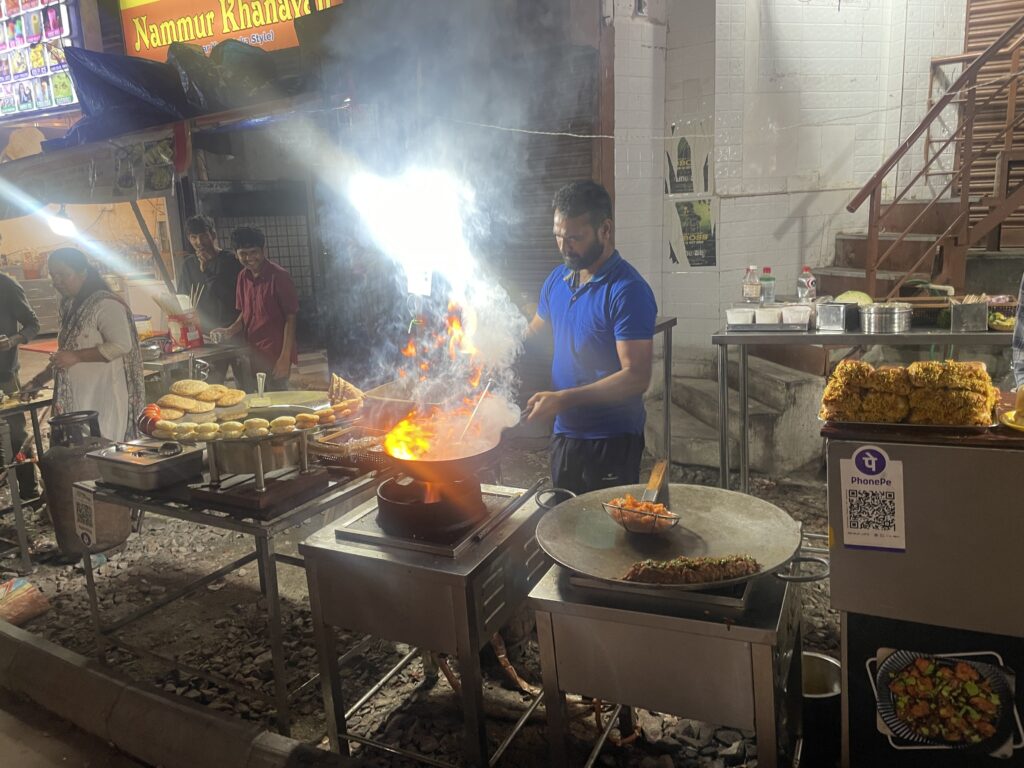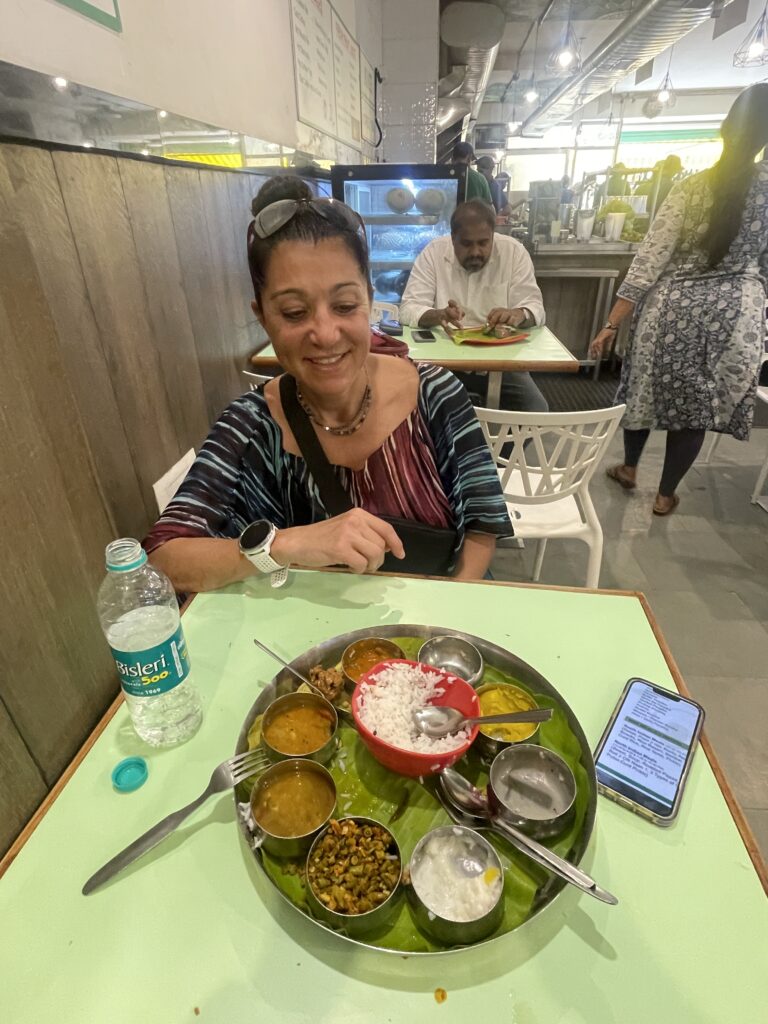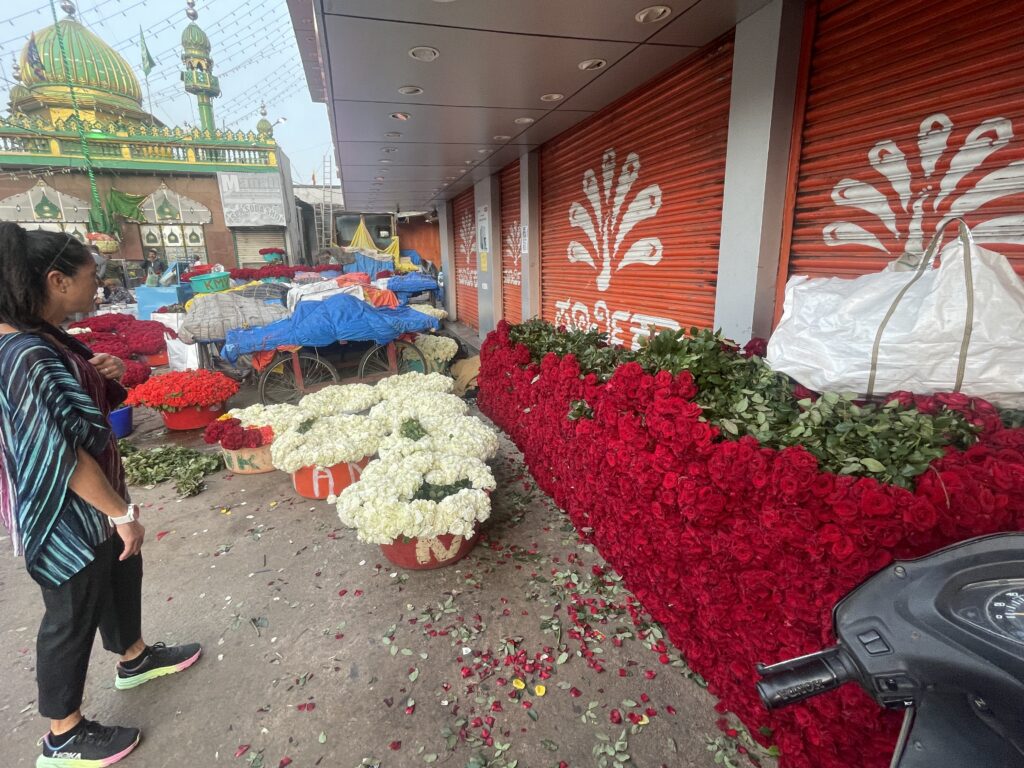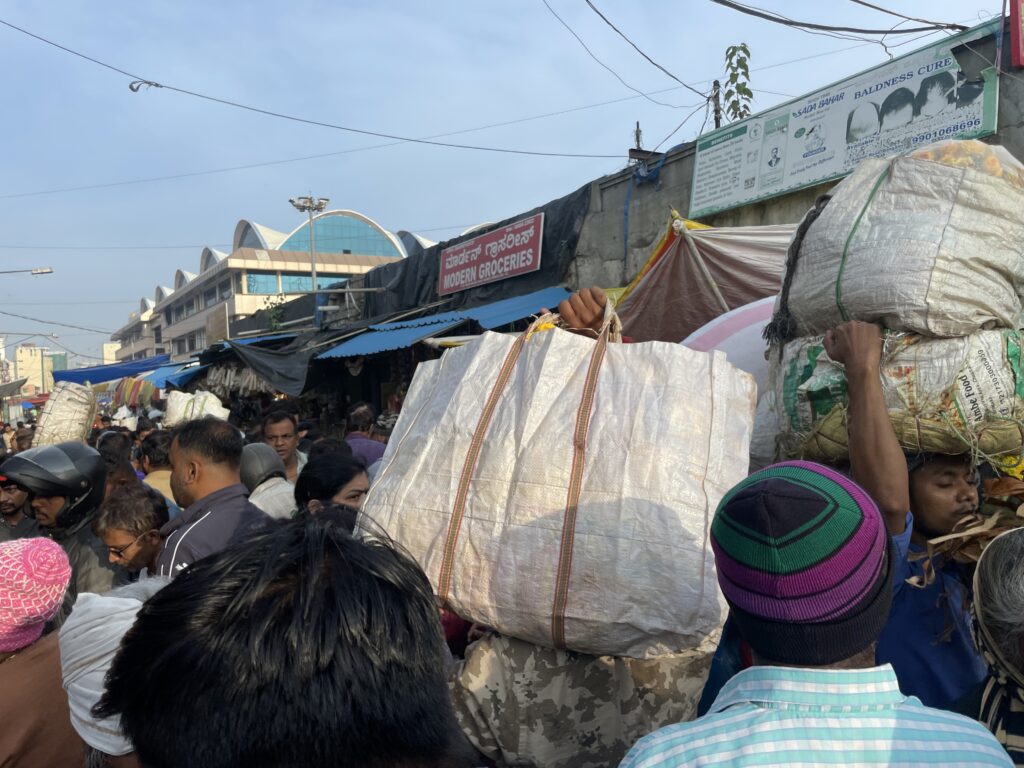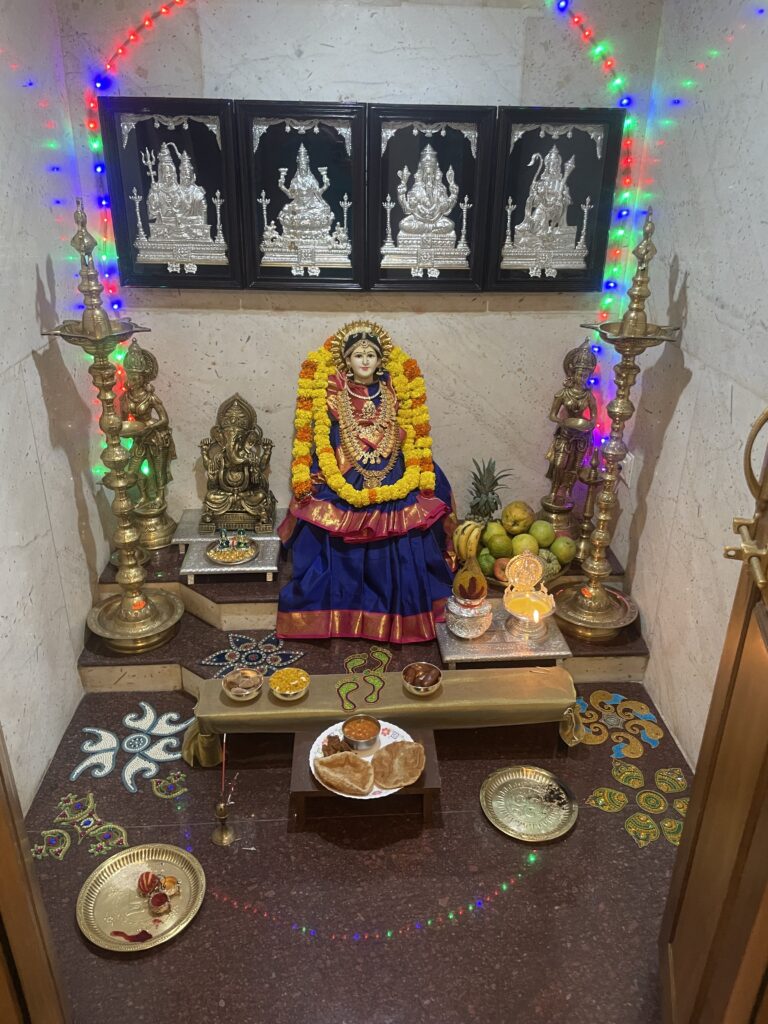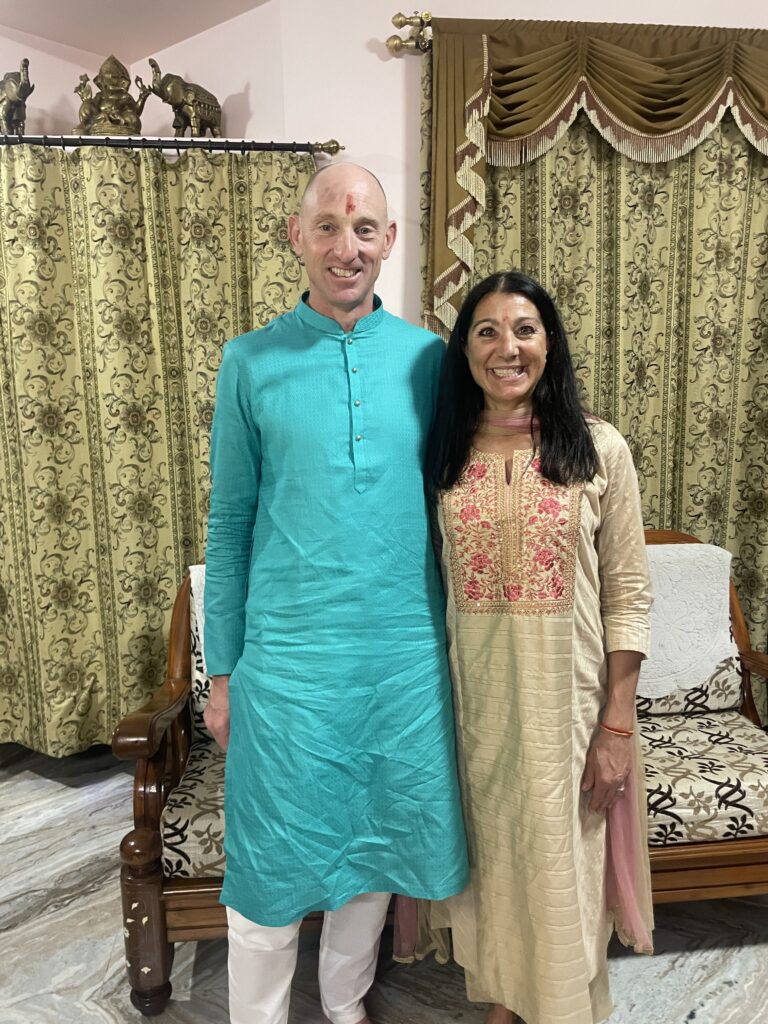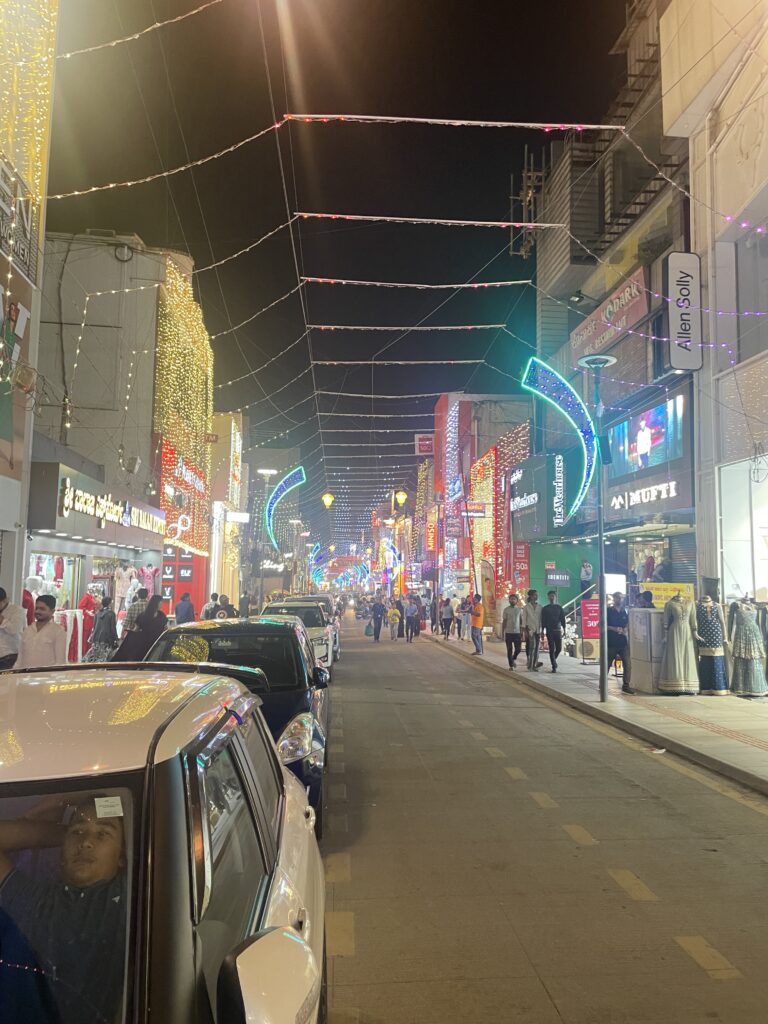Kochi – The Queen of the Arabian City. We arrived in Kochi and immediately felt the intense heat and humidity. It was overwhelming from the first step out of the airport. We had 2 days to explore Kochi before heading into the hill regions. With the heat that was going to be plenty. Kochi and much of Kerala state is much different than anywhere else in India in that it has a large Christian presence. There are numerous churches dating back as old as 800 AD. Vasco de Gama was in Kochi in the 1400s and died there. There is a mix of Dutch, Portuguese, and British influence. There was also a Chinese influence as well.
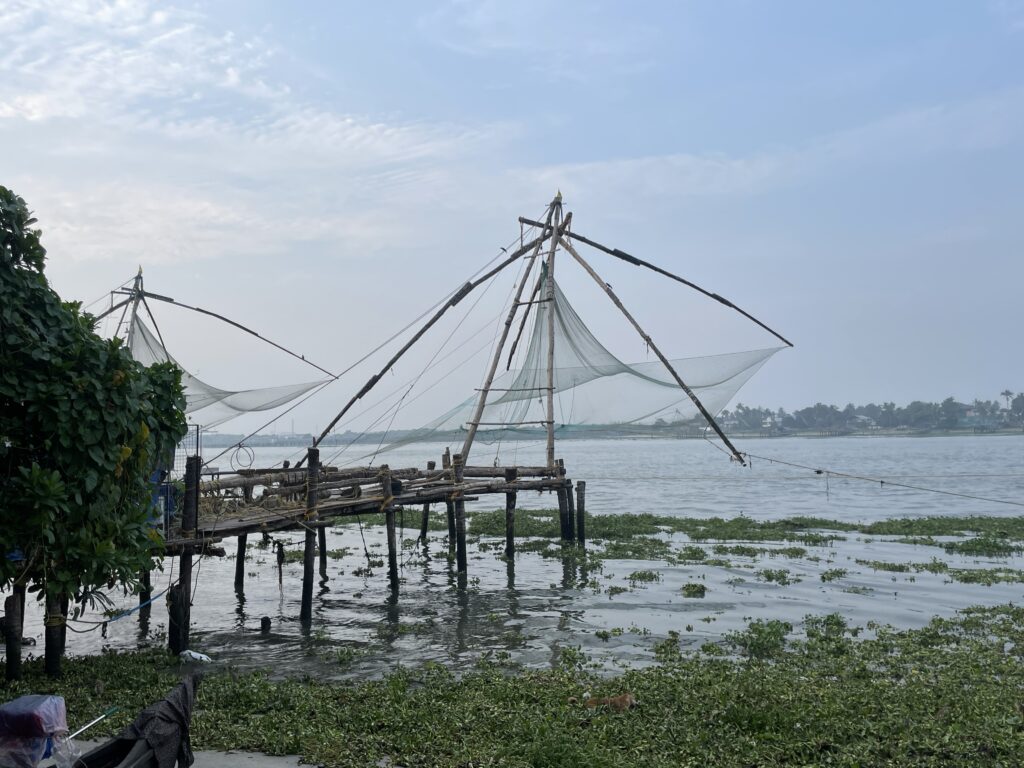
Chinese Fishing Nets
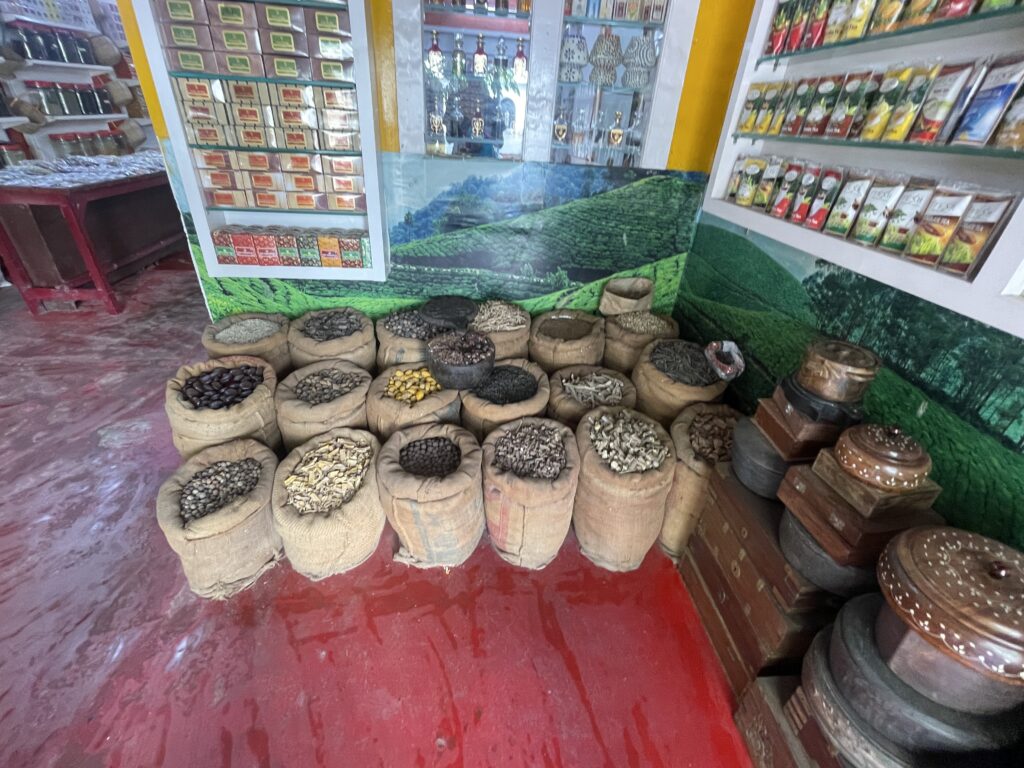
Kerala is known for Fish, Tea, and Spices, especially Caradmmon and Pepper
We had over a week in Kerala and a big goal was to take some cooking classes. Our first class was in Kochi where we made Dry Vegetable Curry (Thoran), Daal, Coconut Rice, Chicken Masala, and Roti. The cooking class took place in Meera’s home and it was a great experience, the dishes were delicious, and we can’t wait to make them at home. A village-to-village trek through the Idukki region was definitely a highlight of the trip. It was very hard to plan a trek with limited topo maps so it was sort of a big guess of back roads tied together in a route from Google Maps, GAIA, and CalTopo. The route ended up great and in the end, we wished we had spent at least 2 more days walking. Day 1 was pretty much a bust. We got to Idukki Dam and it was closed so we couldn’t see the dam and walked to our hotel at 10o North. We got dropped off up the road a little way and had an amazing 7.5-mile walk with over 2,000′ of climbing. About 1.5 miles from the hotel it started raining – HARD. We had a great time sitting at a very small store along the road for about a half hour drinking tea and waiting for the rain to die down (a little). Our hotel was set on a beautiful plantation hillside. Unfortunately, it was socked in fog with zero visibility the entire time we were there.
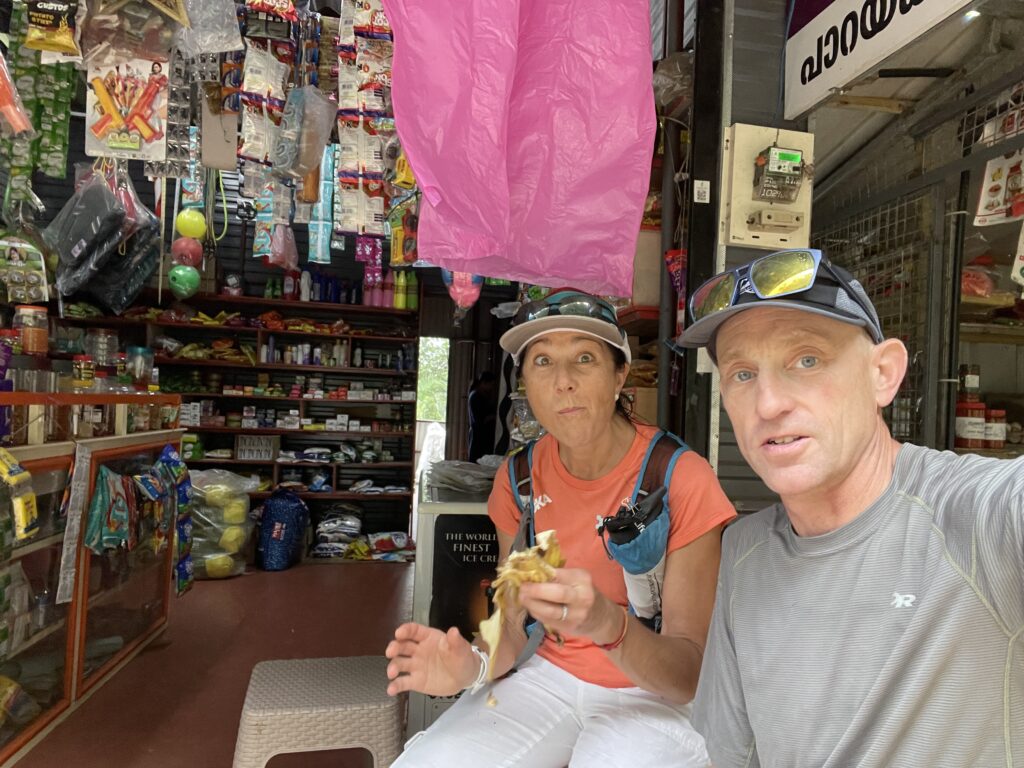
Waiting out the rain with tea and snacks
Day 2 was a taxi ride to Vagamon for the rest of our hiking. This by far started the best part of our trip. We walked around Vagamon, then to the Kurisumala Hill Church which was a long climb up to a Catholic church overlooking the valley. We had not packed food assuming there would be stalls along the road like we had seen during our trip. A few hours went by and there were no food stalls. As we topped a hill there was a small tour bus with a big group of men having a picnic. As we walked by, they motioned us to join them. We declined twice, but on the third request, we accepted. What came out was a highlight of our trip and this great rice and chicken meal. The men loved that we ate with them and asked to take pictures of us. They took tons of photos and videos of us as we ate and we had a fun group photo at the end. Even though they spoke no English and us no Malayalam, we could tell it was a highlight of all of our days and a lifelong memory for us.
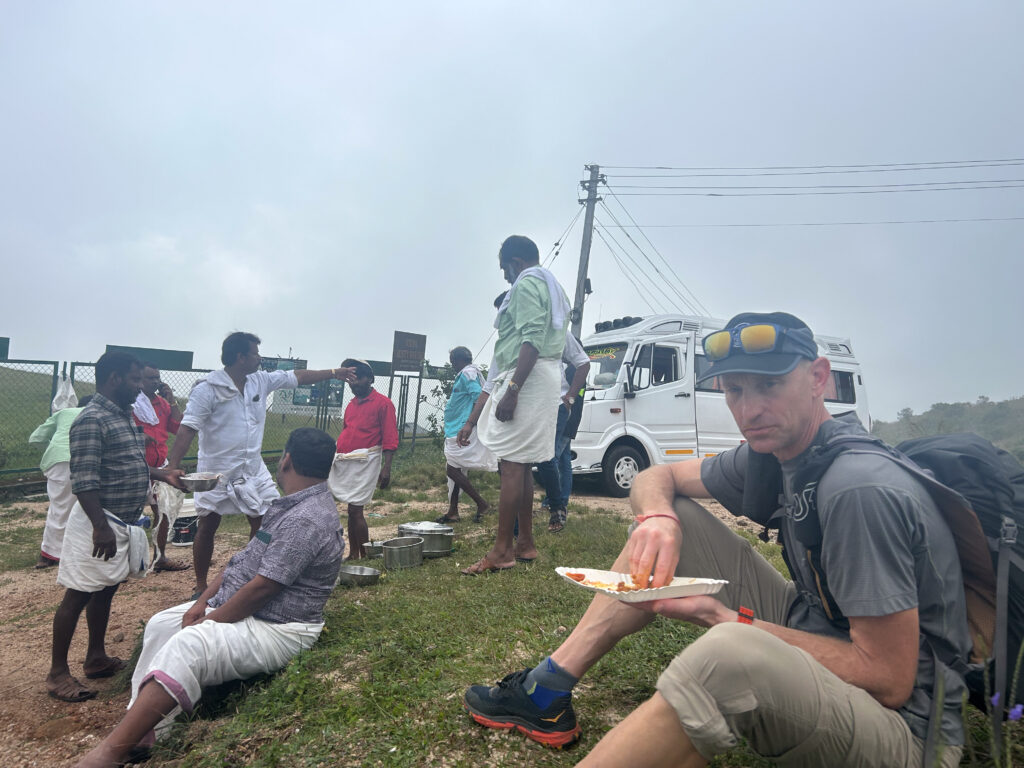
Hilltop picnic – this was a highlight of the trip
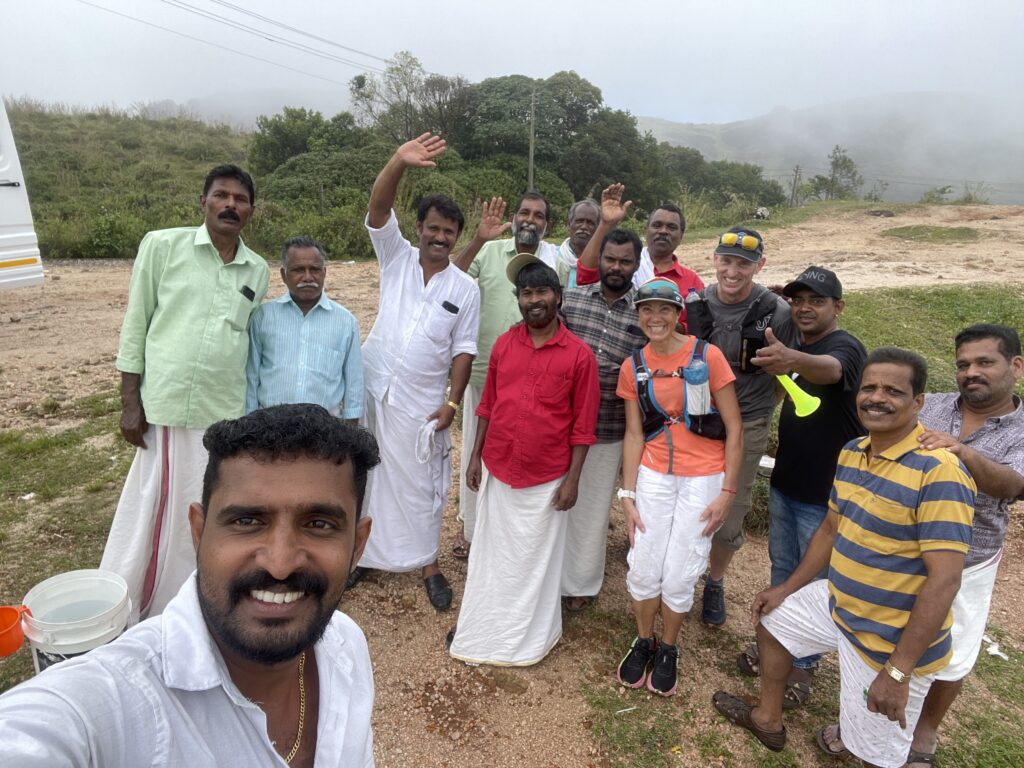
Post picnic group photo
From there we continued to Thangalpara which was another climb, but this time to the tomb of Sheikh Fariuddin from the year 1200 AD. Many schoolchildren and locals were making the pilgrimage. From there, to the Pine Forest which was a beautiful forest that was frequented by many locals and Indian tourists.
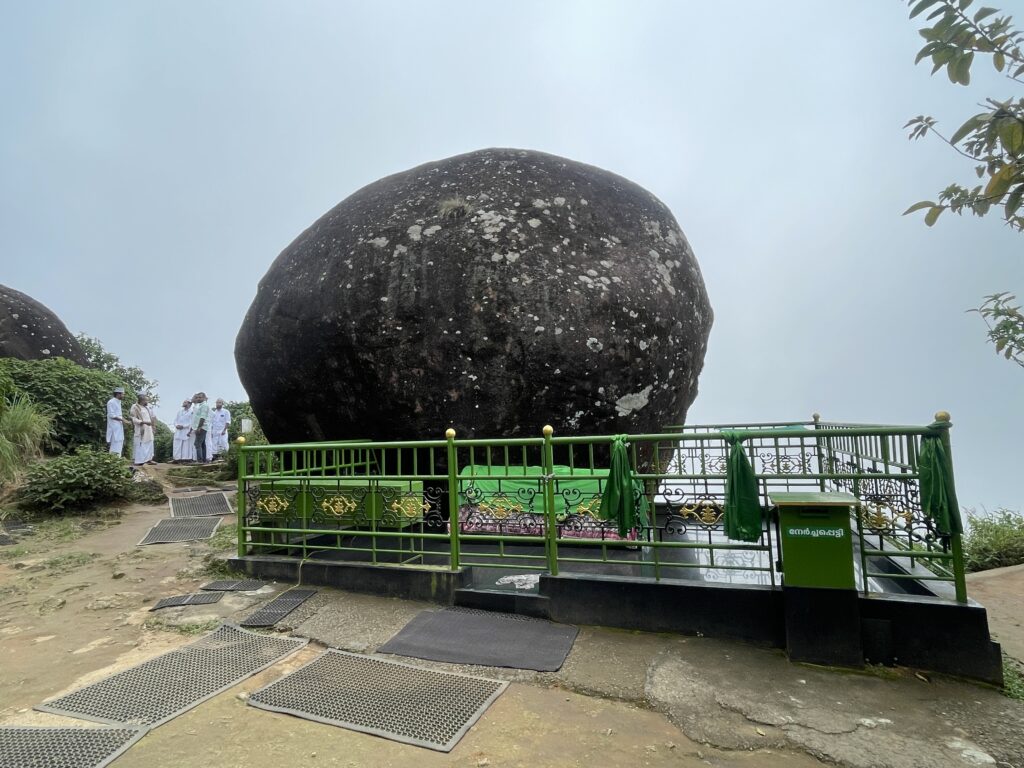
Thangalpara – Thomb of Sheikh Fariuddin
Day 3 was not about sites, but rather about walking back roads and plantation trails. We were completely “off the beaten path”. People looked at us like we were crazy and I am sure they were wondering what the hell we were doing. Breakfast was also a fun experience for us as we found a “homely” restaurant (that is literally what the sign outside stated) which we called the local bread shop as not only were there lots of locals coming in for breakfast but many coming in for takeout of the parotta bread wrapped in newspaper and a plastic bag of the local curry to accompany the parotta. All along, people were so friendly, they would wave, greet us, or stop their car or moto to talk. The friendliness was just amazing and made us feel great. We felt like we were integrating into the local culture. It was hot and shade was minimal. An umbrella was fantastic for shade as we walked.
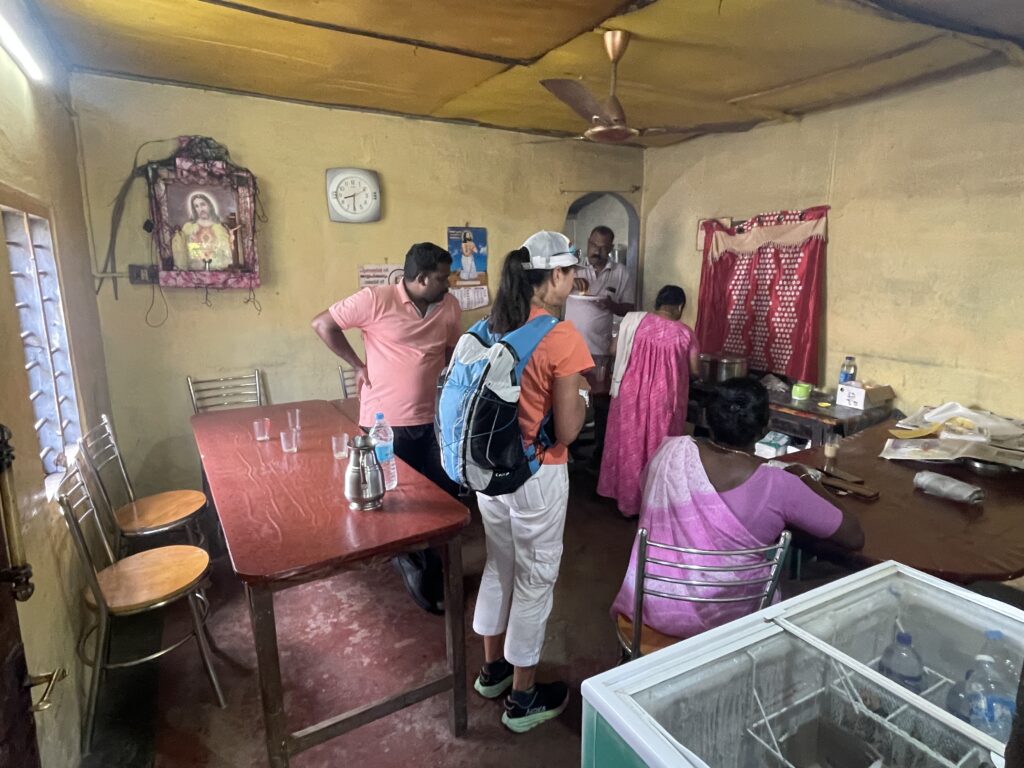
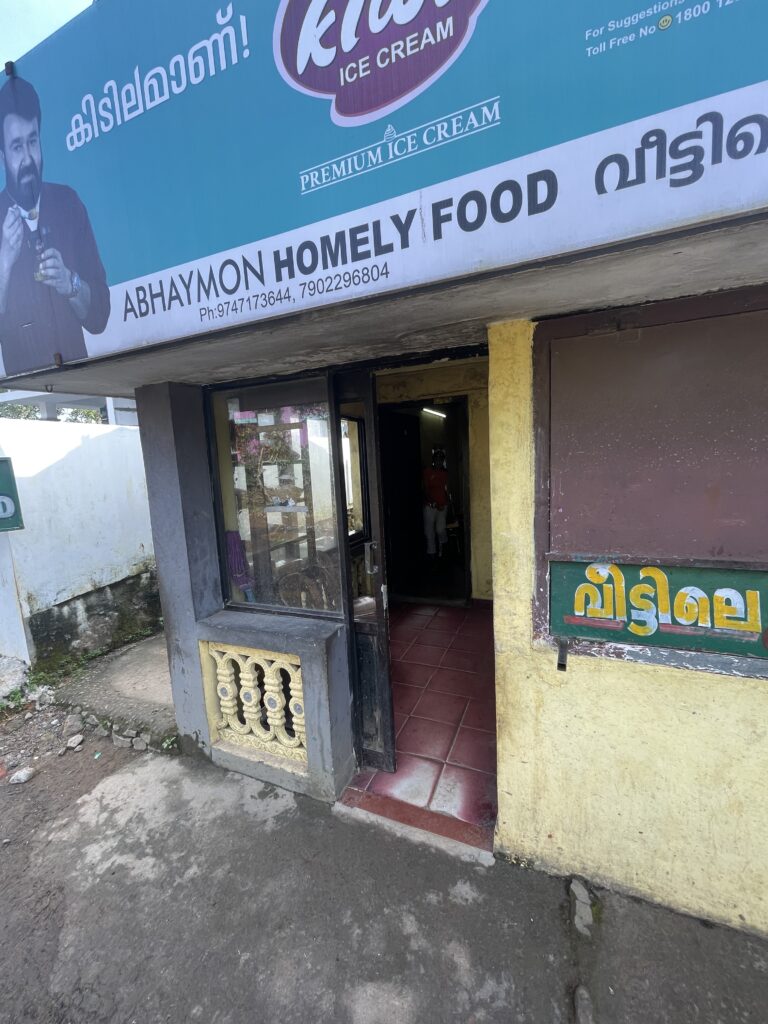
It may say homely food, but it was excellent.
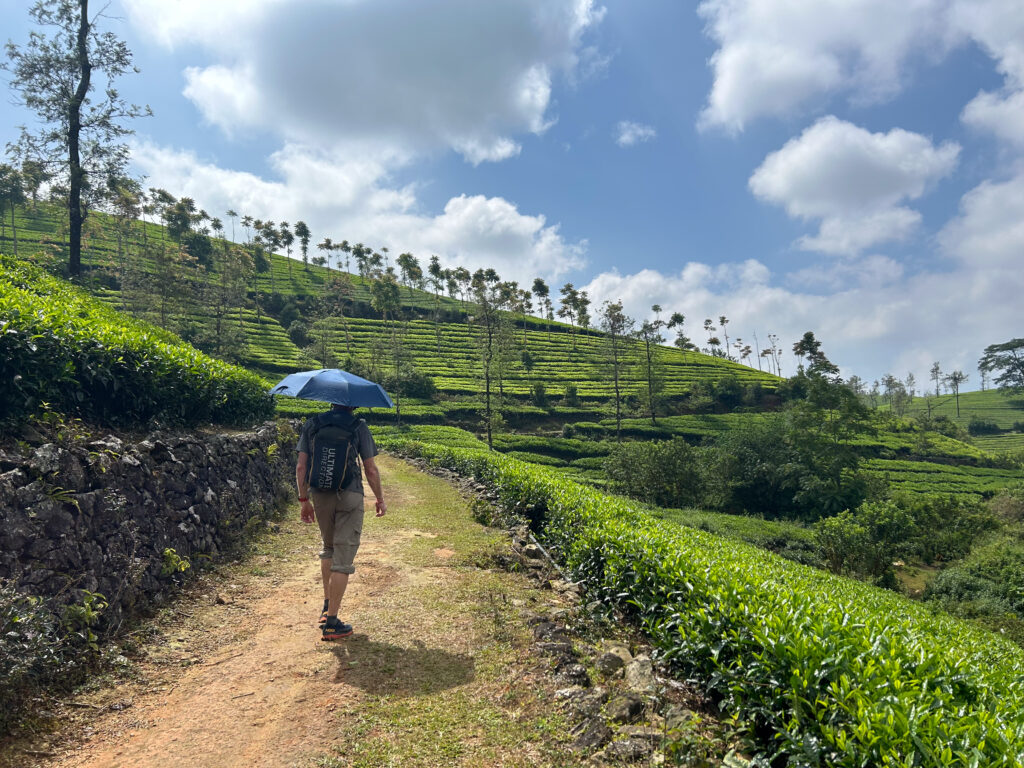
An umbrella was welcome shade in the stifling heat
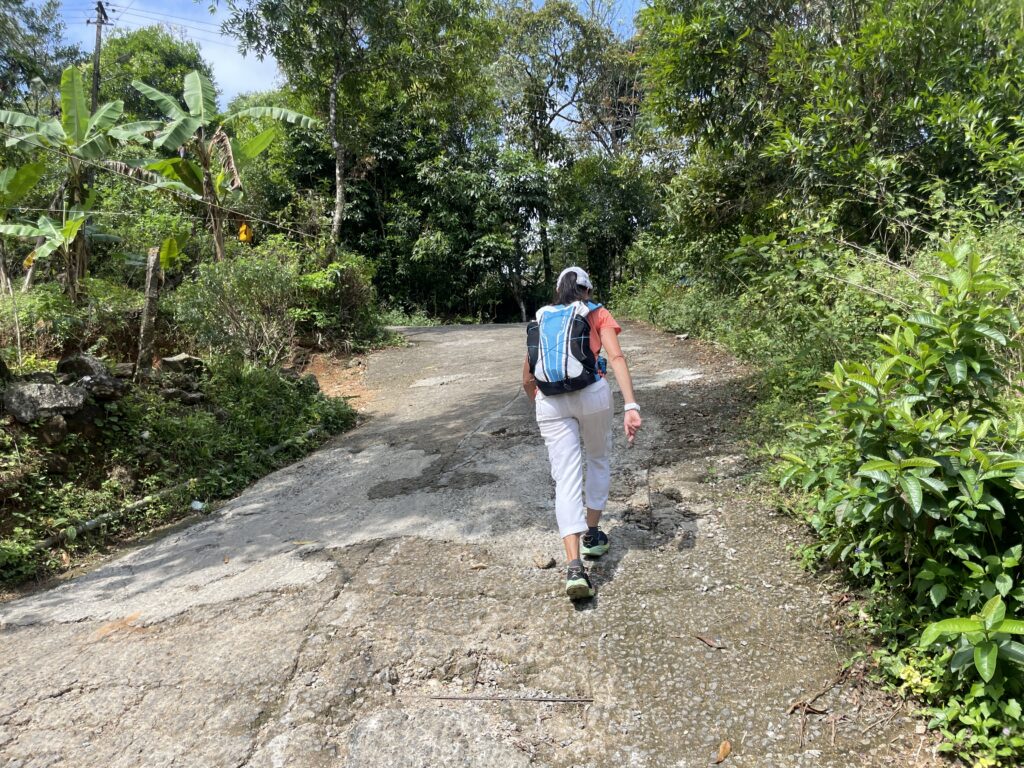
This was a fairly typical 2-lane road. I measured the slope angle at 20o
Day 4: We regret not having more time to spend in villages. Our final day was great walking through plantations and going out of our way to see the Pattumala Church. We had several people asking to take photographs with us which is always a comical, but fun experience.
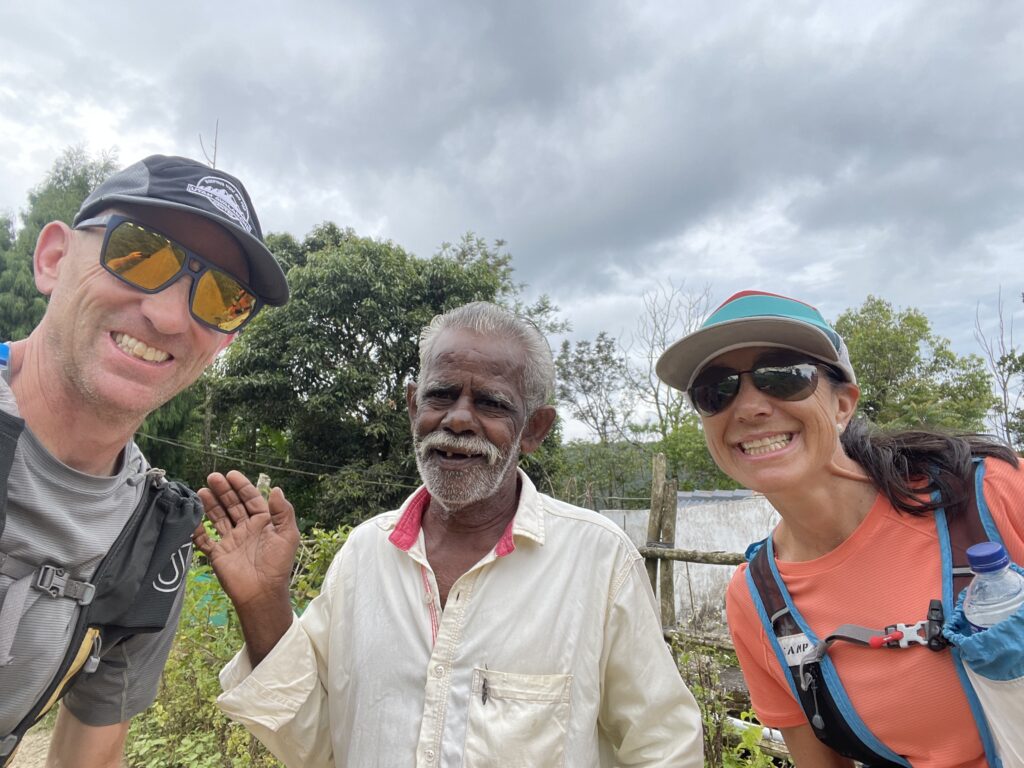
One of the many locals excited to see white people and ask us to have their picture take with them
Day 5: A short walk past Valanjanganam Water Fall and then a bit further to our pickup spot for our ride to Mararikulam.
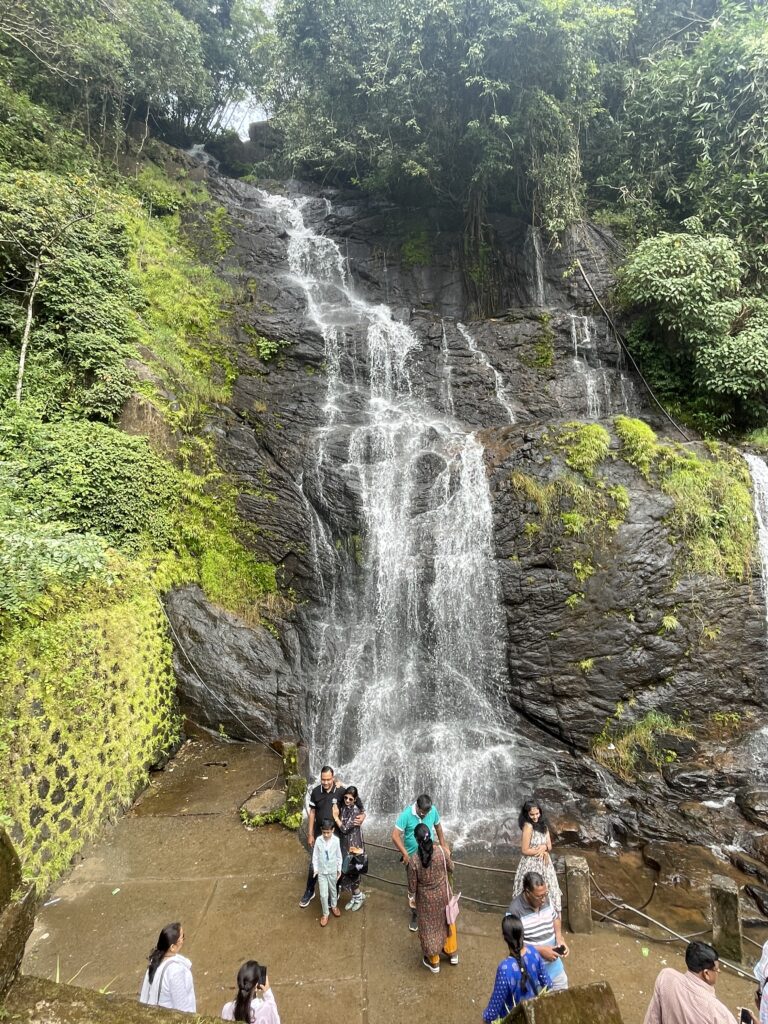
Valanjanganam Water Fall
Part 3 coming up – Allepey, Mararikulam, and Mysore

